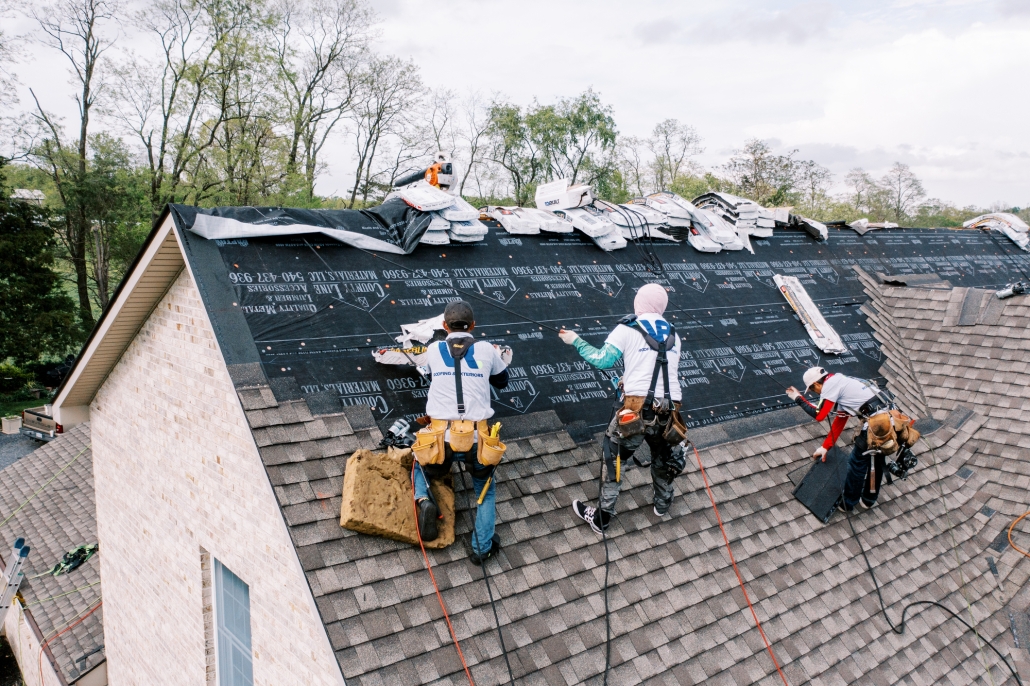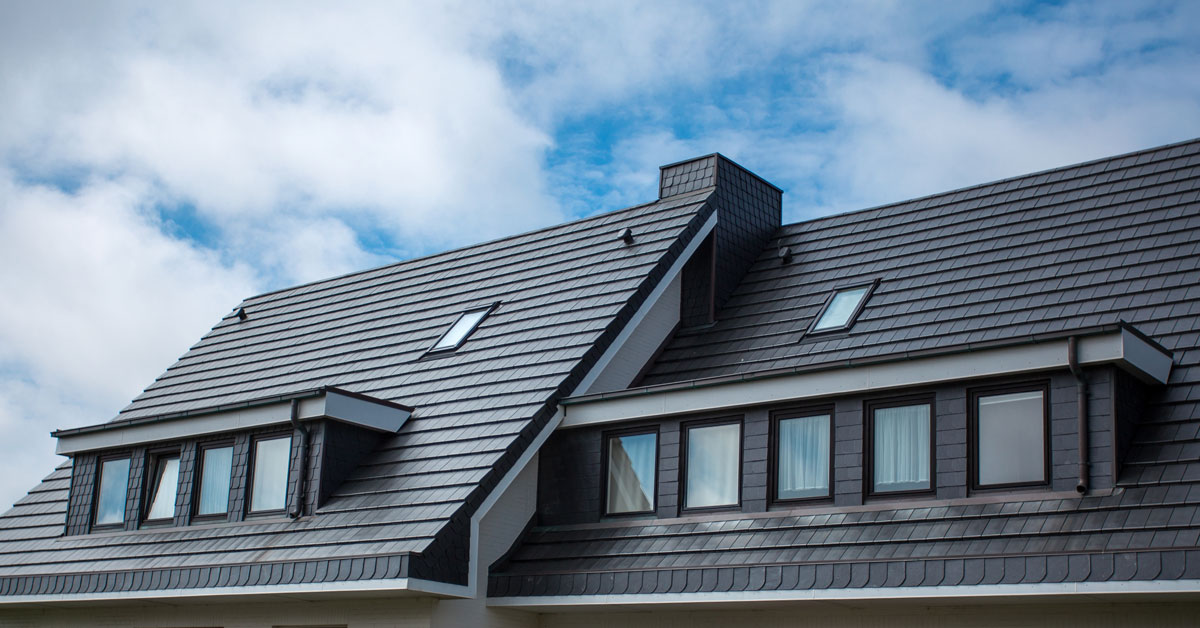Best Practices for Ensuring Proper Roof Ventilation
A balanced intake and exhaust air vent proportion, typically 1:300, plays a crucial function, with intake vents ideally put at the reduced edge of the roof covering for cool air entry and exhaust vents at the peak for cozy air exit. Keeping insulation away from vents is essential to prevent air flow restriction.
Understand Ventilation Fundamentals
Appropriately comprehending ventilation essentials is important for ensuring the durability and efficiency of roof. Efficient ventilation minimizes moisture build-up and temperature level extremes in the attic, both of which can bring about considerable structural damage with time. A well-ventilated roofing system assists in stopping usual problems such as mold and mildew development, wood rot, and ice dams, which can jeopardize the integrity of the roof covering products and the underlying frameworks.
The primary goal of ventilation is to help with the motion of air, allowing for a consistent exchange between the indoor and exterior settings. This equilibrium is accomplished through a combination of consumption and exhaust vents that collaborate to preserve optimal air movement. Intake vents, normally located along the soffits or eaves, permit fresh air to enter the attic room room, while exhaust vents, typically located at or near the roofing system ridge, enable hot, damp air to run away.
Secret variables influencing the efficiency of roofing system air flow consist of appropriate positioning, appropriate sizing, and making sure that both intake and exhaust vents are unhampered. Normal assessment and maintenance are crucial to recognize prospective clogs, damages, or inadequacies in the ventilation system, therefore safeguarding the roof's performance and durability.
Kinds of Roof Covering Vents
Roofing system vents play a vital role in maintaining reliable attic air flow and, by expansion, the general health of the roof system. Different types of roofing system vents are readily available, each with unique advantages customized to details roofing demands.

Soffit vents are mounted under the eaves and job in tandem with roofing vents to ensure a well balanced intake and exhaust system. By permitting cooler air to enter from below, soffit vents promote the expulsion of warm air via upper vents. Gable vents, situated on the exterior wall surfaces of the attic, offer another reliable remedy, especially in homes with gable roof coverings.
Analyze Your Existing Air Flow

Following, consider the age and condition of your roof products and air flow components. Older systems might not abide by current building codes or may have worn away with time, decreasing their efficiency. Conduct a thorough examination to recognize any indications of deterioration, such as corrosion, damages, or spaces that might jeopardize the system's performance.
Furthermore, gauge the attic room temperature and humidity levels. Heats and humidity can suggest poor air flow - gainesville roofing companies. Make use of a hygrometer and thermostat to obtain accurate analyses, comparing them with outdoor problems. Consistent discrepancies recommend potential concerns that require dealing with.
Installation Best Practices
Effective setup of roofing air flow systems is vital for guaranteeing optimal efficiency and long life. Proper installment starts with recognizing the particular ventilation requirements of the roof and the structure it covers. This includes calculating the appropriate ratio of consumption to exhaust vents, generally sticking to the 1:300 rule, which specifies one square foot of ventilation for each 300 square feet of attic floor area.

Consumption vents ought to be set up at the roofing system's reduced edge, often in the soffits, to allow trendy air to get in. Exhaust vents, on the various other hand, must be installed near or at the roofing system's height to assist in the leave of cozy, damp air.
Seal all vent links diligently to avoid air leaks and potential water infiltration. Use high-quality materials and comply with maker guidelines to ensure resilience and efficiency. In addition, integrating ridge vents with baffles can dramatically boost airflow efficiency by protecting against wind-driven rainfall and snow from entering the attic room.
Eventually, precise installment of roof covering air flow systems minimizes potential concerns such as mold development, ice dams, and architectural damage, guaranteeing the roofing system's integrity and the building's total health and wellness.
Normal Upkeep Tips
Uniformity in upkeep techniques is basic to ensuring the long-lasting performance of roof covering air flow systems. Throughout these assessments, guarantee that vents are complimentary of debris, nests, and other obstructions that might impede airflow.
Make use of a soft brush or a click now vacuum cleaner to eliminate dirt and debris from consumption and exhaust vents. Be cautious not to harm the vent screens or louvers throughout the process.
Appropriate insulation is similarly important. Ensure that attic insulation does not obstruct the vents, as this can significantly restrict air movement. If any type of insulation has actually changed or worked out, rearrange or change it to maintain a reliable obstacle.
Finally, change any type of harmed or missing out on parts quickly. Busted vents, fractured shingles, or tatty flashing can all add to insufficient air flow and needs to be dealt with immediately. Regular maintenance makes certain that the roofing ventilation system works efficiently, therefore prolonging the life-span of the roofing itself.
Conclusion
Making certain correct roof air flow is critical for preserving the performance and sturdiness of a roof system. Adherence to the 1:300 intake and exhaust vent ratio, coupled with the calculated placement of vents, is necessary.
A well balanced consumption and exhaust air vent ratio, commonly 1:300, plays a pivotal role, with intake vents ideally positioned at the reduced Bonuses edge of the roofing for trendy air access and exhaust vents at the height for cozy air exit. Consumption vents, usually situated along the soffits or eaves, permit fresh air to get in the attic space, while exhaust vents, typically located at or near the roof ridge, make it possible for hot, moist air to get away.
Soffit vents are mounted under the eaves and job in tandem with roof vents to make sure a balanced intake and exhaust system. By allowing cooler Get the facts air to get in from below, soffit vents promote the expulsion of hot air through upper vents. Adherence to the 1:300 consumption and exhaust vent ratio, paired with the tactical positioning of vents, is essential.
 Rider Strong Then & Now!
Rider Strong Then & Now! Ben Savage Then & Now!
Ben Savage Then & Now! Daniel Stern Then & Now!
Daniel Stern Then & Now! Anthony Michael Hall Then & Now!
Anthony Michael Hall Then & Now! Loni Anderson Then & Now!
Loni Anderson Then & Now!